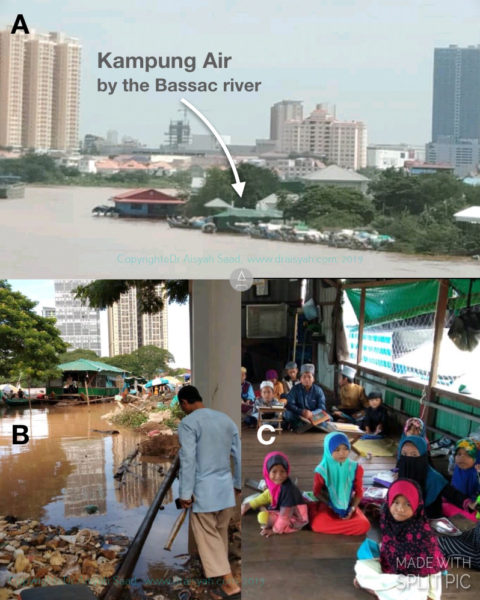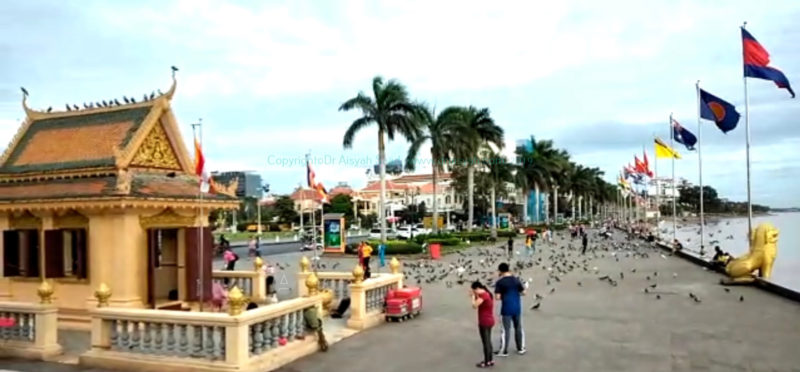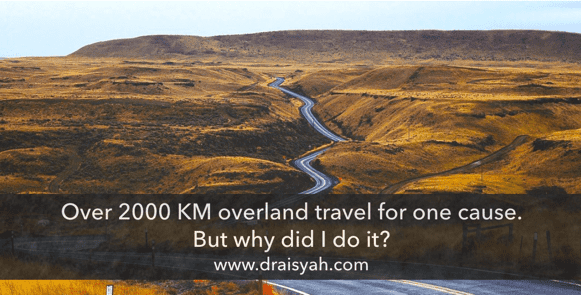In this long post, I share my thoughts, reflections and lessons from the 2000+ km overland journey from Penang to Phnom Penh. This road trip started off with a curiosity 😉
I wonder…
Since I’m doing freelancing at the moment, time is in my hand. Money comes in – enough to get by. And I just sold my car.
Interestingly, that’s when an opportunity presents itself.
I wonder… how far an equivalent amount of one month car installment + petrol would take me, in terms of travelling?
I had to find out.
Through this multimodal overland travels ⛴ 🚞 🚌 🚗 🚕 🛵 I learned a few things:
1. Time is the real luxury
We place a high price for ‘conveniences’ that would maximise our time. I used my car mostly to run errands in Penang. Nak pi B’worth? Tak ada hal, tak payah pi jauh2. Semua ada kat Penang. Kalau tak ada, cuba Lazada or Shopee or Amazon. Mentality org pulau…?😉 Now with Grab, Gojek soon, who needs a fancy car? Think you got my drift.
The equivalence of one month car installment took me from Penang right up to Phnom Penh (incl. hotels, tuk-tuk, Angkor Wat tix). It’s unbelievable how much I’d paid for conveniences.
For the itinerary and further details and travel tips of my solo Penang – Phnom Penh road trip.
2. Phnom Penh: A city of contrasts
I’ve always wanted to do such travelling since I was studying in the UK. Looking at a world map, now Google Map, one can see how little towns and cities are connected. By doing so, I learn how the local people live, work and get around.
Typically I would visit local markets or eateries, not shopping centres or theme parks. In Phnom Penh, I hired a tuk-tuk to go to a Cham community (Prek Pra village). Saw how they live (by the Bassac river), food they eat (river fishes e.g. patin, keli and haruan; vegs and fruits).
The tuk-tuk driver took me to a ‘floating village’ by the Bassac river – which sounds glamorous. And looks idyllic from afar (photo A).
Until I saw it, up close, with my own eyes (photos B and C). Loss for words. It took me a full minute before I could utter a word to my tuk-tuk driver.

The Bassac River was on a ‘high tide’ in July – Oct. There seems to be no pathway to get to the floating masjid from where we were. So I had to carefully balance myself on rickety pole, planks, muddy earth etc to visit the masjid. Or else… may become food for fishes😅
The green-roofed structure is a masjid on 2 sampans. The kids were having a Quran class when we interrupted them with our visit. The village has about sixty families living on sampans. Why? More here.
Against the backdrop of metropolitan Phnom Penh with new glitzy high-rise buildings on my way to this Cham community and Kampung Air. The contrasts are so stark and grim. Modern and vibrant. Rolls Royce, Lexus, tuk-tuk and rickshaws. Rich and poor sharing the same roads, moving in meditation towards their destinations.
Underlying all that are awareness, calmness and respect in harmony. The past, present and future of Cambodia, all weaved together.
3. Appreciate more of what I have
This overland journey teaches me to appreciate more of what I have, what we have as Malaysians. We see increasingly steady streams of complaints, provocations and comments on social media and newspapers.
During my travels, I had the privilege to hear a heart-wrenching story, first-hand from SN who was once a refugee during the Pol Pot’s Khmer Rouge regime. For more than a decade, SN was displaced from home, lived in refugee camps and saw many of the family members died due to starvation and/or diseases. With no formal education, SN worked up the ranks of the corporate world and now is leading a very successful career.
But putting a traumatic past behind is not as simple as we would like to think or say or put out on social media.
Under the scar, the wound may still be fresh.
Healing oneself takes years, healing a country may take decades.

Phnom Penh city, Riverside. Scenes in the morning.
If you want changes, change starts with person in the mirror first. For life-changing moments, go to Cambodia. Or inner parts of Borneo and visit Org Asli, kalau malas nak keluar Malaysia.
It takes decades of effort to restore and keep peace, and develop Malaysia to where it is now. The envy of many countries, in many sectors – banking, education, health, businesses and governance with many talented Malaysians from different races and faiths. And now we are in the position to help others.
In Phnom Penh, Malaysian businesses and banks are thriving. Public Bank, CIMB, Maybank – to name a few.
But if we don’t appreciate what we have now, with the intention of distrupting and breaking things down, rather than build on what we have… susah lah masa depan.
4. Confluence of passions
Phnom Penh is situated at the confluence of three big rivers–the Mekong, Bassac and Tonle Sap. Similarly, I’m passionate about presentations, digital education and of course, travels.
When I mooted this little idea to Harpswell Foundation, I wasn’t sure if it’d be well accepted, or would come to fruition. FYI, Harpswell Foundation (HF) supports the brightest young minds at universities–girls from rural areas around Cambodia are selected and nurtured to their greatest potentials.
HF gave a green light, and it turned out cool – students learned something new or perhaps new ways of looking at things and improve their productivity.

Great energy, good turnout at the workshop sessions on presentations,
MS Word, LinkedIn/social media and video creation.
Industrious and creative they are; their world, I reckon, would be mostly digital, flexible and mobile. Happy to share a thing or two with future women leaders in Cambodia. My big why.
A big thank you to the Harpswell Foundation for the opportunity and great hospitality. Find out more on Harpswell Foundation.
My facebook post on this trip.
At personal level
Lastly, any journey or travel we take… we learn more about ourselves. I love the following quote by Rumi.
Your heart knows the way. Run in that direction–Rumi
In this busy world, we tend to get drown and influenced by outside elements. That we may forget to take an inner journey, to reflect and ponder. To listen.
The usual outcome of rarely accessing our inner GPS is feeling lost or uncertainty. It may get worse if we rely solely on our brain… The brain analyses, shouts, argues and compares. And talk incessantly. Sleepless nights.
Go beyond the chatters. Listen to the small voice. The inner voice.
The inner voice doesn’t shout; it whispers. Can you hear the whispers of your soul?
YOURS TRULY
The inner voice guides. It is our inner GPS to help us navigate this world.
Two thousand kilometres later…
For me, this journey is about learning to stay silent and still. To observe and listen closely to my heart. Trusting myself to stay true to my passions.
To stay in my lane. Trusting my heart to take me to the destination.
It’s when I feel closest to my Maker.
*Cambodia currency is riel but USD is accepted and used inter-changeably with riel.
Malaysian Ringgit, Singaporean Dollars and Thai Bahts are also easily accepted at some places.
Still, quite happy to be back to using ringgit.

I loved reading about your travels, but more about your motivations and your observations. Fantastic I can’t wait for your next instalment.